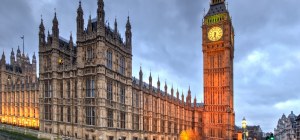33: Great Repeal Bill – Going back to the border
Happy new year!
This first blog post of 2018 looks at developments not only the European Union (Withdrawal) Bill, but also on the Taxation (Cross-border Trade) Bill (better known as the Customs Bill) and the Trade Bill, which both received their Second Reading in Parliament this week. We commented on the policy papers which preceded these latter two Bills here.
European Union (Withdrawal) Bill
The Bill, which completed its Committee Stage before Christmas returns for Report Stage on 16 January 2018. MPs have continued to list amendments for Report Stage, with the most notable additions those by the SSExEu himself, David Davis. The main effect of his amendments (Nos. 14 to 38) can be summarised as follows:
- You’ll recall that clause 7 of the Bill grants Ministers a power to correct ‘deficiencies’ arising in retained EU law. Amendment 14 would make the list of these deficiencies in Clause 7(2) (in respect of which Ministers have a power of ‘correction’) an exhaustive list, rather than an illustrative list. But don’t get carried away thinking the government is ‘rowing back’ on the powers it had previously sought: Amendment 15 provides that anything which is of a similar kind to any deficiency falling within paragraphs (a) to (g) of Clause 7(2) is also a deficiency for the purposes of Clause 7. It also provides for a Minister to describe, or provide for, other deficiencies in regulations. (Amendments 16 to 24, 30 to 32 and 34 are consequent on these amendments).
- Amendments 25, 28 and 29 would allow a devolved authority (ie the Scottish, Welsh or NI government) to make regulations which modify direct EU legislation or retained EU law to:
- prevent, remedy or mitigate deficiencies in retained EU law, under Part 1 of Schedule 2;
- prevent or remedy a breach of international law arising from withdrawal, under Part 2 of Schedule 2; or
- implement the withdrawal agreement, under Part 3 of Schedule 2.
These amendments would also allow regulations to be made, in equivalent circumstances, that are inconsistent with modifications of retained direct EU legislation etc made by a Minister or the Bill itself. But such regulations are can only be made when allowed by means of an Order in Council has been made under Clause 11 of the Bill. (That seems unlikely to be enough to satisfy the SNP or Plaid Cymru.)
- As the Bill stands, a devolved authority cannot exercise its powers to prevent, remedy or mitigate deficiencies in retained EU law, under Part 1 of Schedule 2, to make regulations that come into force before exit day and remove certain reciprocal arrangements, without the consent of a Minister of the Crown. Amendments 26 and 27 would replace that consent requirement with a requirement that the devolved authority consults the Secretary of State.
- Amendment 33 would make the power in Clause 14(4) to amend the definition of ‘exit day’ subject to the affirmative procedure.
- Amendments 35 and 36 would require that, where a Minister is to make an explanatory statement (ie on the appropriateness of a draft instruments containing regulations made under Clause 7(1), 8 or 9), that should laid at the sifting stage, but there is no need to make a further statement thereafter.
Customs Bill
As explained here, the Customs Bill is required to provide the UK with a coherent customs regime after Brexit. The Explanatory Notes summarise the Customs Bill’s purpose as follows:
‘Whatever the outcome of negotiations with the European Union (EU), the UK will need to legislate for a new Customs regime to be in place by March 2019. The new regime must provide for the tariff-related aspects of the UK’s future trading framework. It will need to allow sufficient flexibility to give effect to a range of potential outcomes from negotiations with the UK’s European partners, including an implementation period, and implementation of a new Customs regime in the event there is no negotiated settlement.
In relation to VAT and excise, it is necessary to amend existing legislation as a consequence of the UK’s withdrawal from the EU with or without an agreement in order to ensure that these regimes work appropriately on withdrawal.’
Given the need for flexibility, the Bill provides a framework of powers to enable Ministers to establish a new regime. There is a an excellent Parliament briefing here, but in summary the Customs Bill covers:
- customs duties (also known as tariffs or import duties). Currently, the EU has common external tariffs and declaration procedures registered with the World Trade Organisation, and a codified customs law (the Union Customs Code). The government (and UK business) wants to replicate these provisions so far as possible, and so they have formed the basis of Parts 1 and 2 of the Bill. Of course, any customs regime established could later be dropped as part of a future Free Trade Agreement, either with the EU27 or another country;
- trade defence measures, to be administered by a new Trade Remedies Authority established by the Trade Bill, including anti-dumping measures, protection against subsidies, countervailing duties, temporary protections for nationally significant industries;
- trade preferences, ie reducing tariffs imposed on goods import from certain developing countries, modelled on those currently in place through the EU;
- excise duties, ie the power to impose tariffs on certain categories goods being exported from the UK (eg alcohol and tobacco); and
- VAT, ie to abolish the EU concept of ‘acquisition VAT’ (for business-to-business intra-EU movements) so that import VAT is charged on all imports from outside the UK, and to enable the Government to establish that new regime.
The Customs Bill would give the government considerable powers to use secondary legislation (including a number of Henry VIII powers). The government argues that ‘framework’ primary legislation with supplementary secondary legislation is usual practice for indirect taxation and, anyway, the arrangements need to be flexible enough to deal with different circumstances and respond to changes given the precise detail of some provisions may not be known until the UK’s future relationship with the EU is clarified. Furthermore, the government argues that secondary legislation is appropriate for the customs tariff, due to its size. The EU customs tariff contains more than 17,000 different goods and around half a million separate customs codes are needed once reduced tariffs for certain trading partners are taken into account.
The Customs Bill passed Second Reading (which means that the general principle of the Bill is approved) and so it will next be considered in a Public Bill Committee, which is scheduled to conclude by Thursday 1 February 2018, but could finish earlier.
Trade Bill
Together with the Customs Bill, the Trade Bill is intended to allow the UK to continue its existing trade policy as far as possible immediately after Brexit, but is not intended to deal with future trade agreements with the EU or other countries.
The Trade Bill makes provisions relating to international trade which are not directly tax-related (those are in the Customs Bill). There is a briefing here, but in summary, the Trade Bill would:
- grant powers to the government to facilitate the transition of trade agreements between the EU and third countries to agreements between the UK and third countries;
- provide for the UK to implement non-tariff obligations (eg labelling, product specifications) flowing from international trade agreements, including those flowing from transitionally adopted international trade agreements;
- ensure continuation of the UK’s membership of the WTO’s government Procurement Agreement (GPA), which enables UK firms to participate in public procurements in other countries;
- establish a new investigating authority, the Trade Remedies Authority, to deliver the UK’s trade remedies function; and
- provide HMRC with powers to obtain trade information.
The Trade Bill gives the government wide powers to use secondary legislation, largely using the negative procedure, and includes ‘Henry VIII powers’ (Clauses 2(1) and 7(3)). The government justifies this on the grounds of ‘flexibility, transparency and efficiency’ and the need to put a framework in place in the short time available before Brexit, but the use of such powers is likely to raise questions about Parliamentary scrutiny.
The Trade Bill also passed Second Reading and so will next be considered in a Public Bill Committee, scheduled to conclude by Tuesday 30 January 2018, but could finish earlier.
Enjoying the blog? Why not try the Great Repeal Bill Blog playlist on Spotify.
‘I’m going back to the border (going back), where my affairs ain’t been abused’ (Aretha Franklin, Border Song (Holy Moses))











